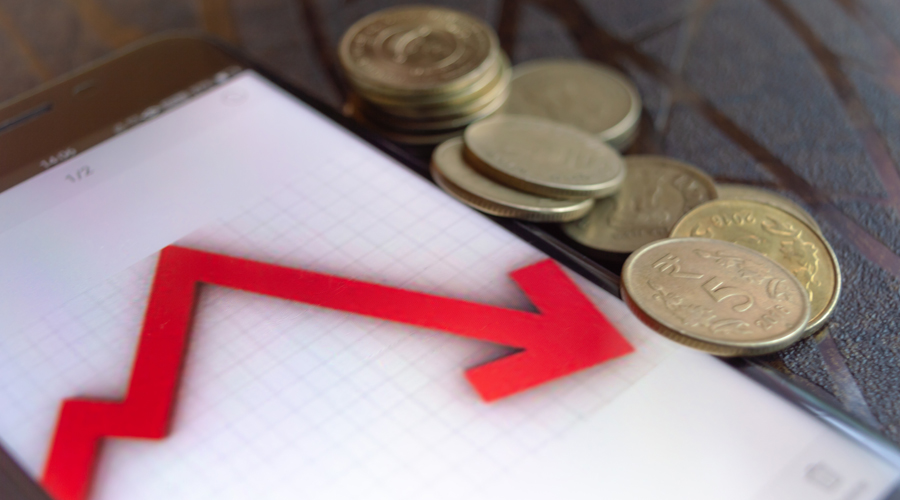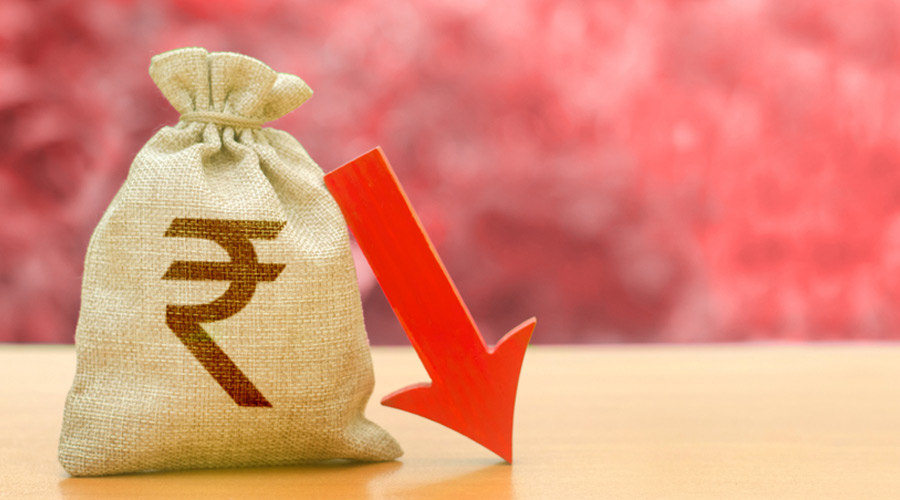The rupee could breach the psychologically key level of 80 to the dollar soon, foreign exchange analysts said, as the rupee hit a fresh record low Wednesday against the greenback for a third straight trading session.
The rupee weakened to 79.66/67 to the dollar, down from its lifetime low close Tuesday of 79.60, while the dollar gained further against major currencies, buoyed by expectations of further interest rate tightening by the US Federal Reserve.
The global flight to the safe-haven assets, Russia’s invasion of Ukraine that has driven oil and other commodity prices to new peaks, interest rate hikes to combat inflation and fears about slowing economic growth worldwide has pushed the greenback to two-decade highs against a basket of currencies.
The decline of the euro, in particular, has been swift on the back of the war which has sharply dimmed the region’s growth prospects amid uncertainty about Russian energy supply and the common European currency hit parity on Tuesday with the dollar for the first time since 2002. Twelve months ago, the euro was trading above $1.20.
Depletion of forex reserves
India’s central bank has been intervening on foreign exchange markets, selling dollars and buying rupees, to shore up the Indian currency. But that action has meant depletion of the country’s foreign exchange reserves which are at their lowest level in more than 14 months at $588.3 billion.
“The dollar index rallied as demand for safe haven increased on worries about slowing global economic growth,” ICICI Securities said in a note.
The rupee has fallen 6.6 per cent against the dollar so far this year. The rupee’s decline comes after several years of relative stability for the currency.
If India’s “trade deficit continues to remain high, further depreciation of the rupee above 80 to the dollar is likely in the next two months,” said V.K. Vijayakumar, chief investment strategist at Geojit Financial Services. Analysts at Yes Bank expect the rupee to touch the 81-per-dollar level by the end of this fiscal year in March 2023.
'Orderly evolution'
The Reserve Bank of India’s goal is to ensure “an orderly evolution” of the rupee, whether up or down,” central bank governor Shaktikanta Das said Tuesday at an event organised by the Singapore Indian Chamber of Commerce and Industry in the city state, according to Bloomberg. But the central bank is not targeting any specific level for the rupee, aiming only to defend the currency against any major speculative attacks.
Analysts say it is impossible for central banks anywhere to defy broad-based trends in the movement of the dollar without burning through their foreign exchange reserves.
The rupee has been falling under the pressure of outflow of funds by foreign institutional investors and elevated crude oil prices. Hawkish statements from the US Federal Reserve about aggressively raising interest rates further to tame inflation also boosted the dollar and added to the investor exodus.
Higher costs of everything
For consumers, a weaker rupee means higher costs of everything imported from food to fuel and more expensive foreign travel. For manufacturers, it means increased prices of component parts among other consequences.
The central bank, which is expected to tighten interest rates further in August, got some positive news Tuesday as retail inflation dropped marginally to 7.01 per cent in June from 7.04 per cent as prices of vegetables eased. But inflation is still above the bank’s upper tolerance level of six per cent.
“The global economy is going through an extremely uncertain period amidst the simultaneous interplay of various headwinds – a lingering war and enduring COVID; the sharp rise in energy and other commodity prices; strains in global supply chains; and worsening food security,” Das said in a separate speech.
Current account deficit
The rupee is also being hit by expectations that India’s current account deficit will expand to 3.3 per cent in this financial year from 1.2 per cent last year. The outlook for the current account which records the trade of goods and services of an economy with other countries — began to worsen significantly with Russia’s invasion of Ukraine in February.
The cost of oil is denominated in US dollars and as India imports some 85 per cent of its crude oil needs, the cost of fuel imports has climbed steeply. The price of oil has receded from a 14-year high of $140 a barrel in March to $99.78 per barrel on Wednesday as fears of a global economic recession have risen. But oil analysts see the price of oil potentially hitting $200 a barrel amid fuel shortages this coming winter.
“The sharply tightening financial conditions due to the ongoing monetary policy normalisation on the one hand and the persisting geopolitical tensions on the other pose significant downside risks to near-term global economic prospects,” warned Das.
Stagflation worries worldwide
"They are also sparking stagflation concerns worldwide,” he added. Amid repeated supply shocks from oil prices in the 1970s and weather-related food shocks, countries were mired in stagflation with double-digit inflation accompanying a rise in unemployment.
Before Russia’s attack on Ukraine, India’s inflation rate was expected to moderate significantly on the back of falling Covid-19 infections, improvement in supply chains and a normal monsoon. “But that narrative was completely overtaken” by the war that led to a sharp spike in global crude oil and other commodity prices,” said Das.
Global food prices reached a historical high in March and their effects were felt in edible oil, feed cost and domestic wheat prices. The loss of rabi wheat production due to an unprecedented heat wave put further pressures on wheat prices,” he said. Inflation has also been spurred by supply chain and logistics bottlenecks due to the war and Western sanctions on Russia.
'Soft landing' for economy
Indian monetary policy is guided by the Reserve Bank’s desire to preserve financial stability and ensure “a soft landing” for the economy, Das said.
In a move to support the rupee, the bank just announced a plan to permit more trade transactions to be paid for in Indian currency, allowing the country to dip less into its dollar foreign exchange reserves to pay for imports. This will also facilitate increasing trade with Russia which has sharply increased its crude oil sales to India. New Delhi purchased $5.1 billion worth of Russian oil in the three months to May, five times the value it imported a year earlier.
The government also increased gold import duty by 5 per cent to 15 per cent in a bid to curb Indian imports of the precious metal that are settled in dollars. India is the world’s second-biggest gold consumer after China.












